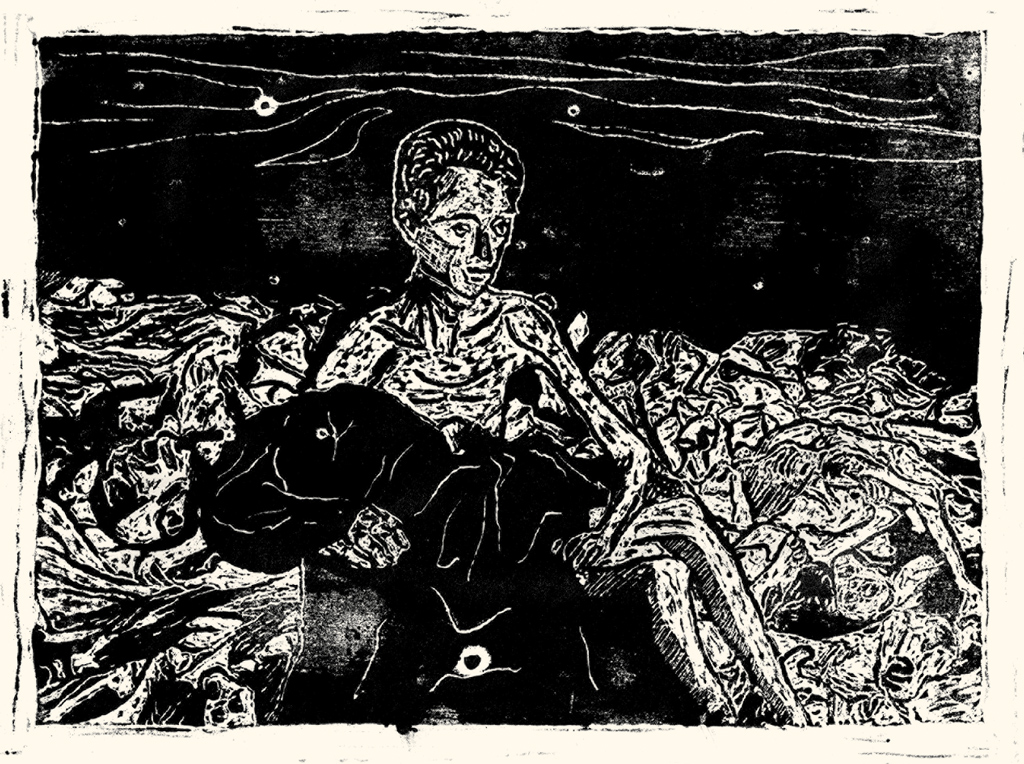In general, the Bible is rather sparing when it comes to physical descriptions. Not much is known about the appearances of Adam and Eve, Abraham or Moses. We are told scarcely more than that the matriarchs were “beautiful”, “fair to look at”, or “lovely”… Hardly specific! And yet certain physical features are sometimes indicated. When this is the case, it is because they are of particular importance to the story or they reflect a personality trait of their bearer. And this is typically what we see with hair: if it is mentioned, hair tells us something fundamental about the person who is so endowed. In fact, hair always seems to be associated with power—for better or for worse.
First, for worse, as seen in the story of Esau. Son of Isaac and Rebecca and twin brother of his rival, Jacob, he is the first hairy character we meet in the Torah. The text tells us that he was born “covered in hair like a fur coat” (Genesis 25:25). This might be where his name comes from: scholars connect Esau with the word asah, the past participle of the verb laasot or “to do.” They believe Esau was born “fully completed”—in other words, having already reached puberty.
His hairiness, impressive in its precocity and abundance, seems to presage an animalistic quality. Indeed, as he grows up, he develops a fiery temperament (he is associated with the colour red) along with an impulsiveness that can be seen, for example, when he returns home from the fields hungry and readily agrees to exchange his birthright with Jacob for a bowl of lentils. This inability to control his impulses and consider the long term, instead preferring to live in the present, is precisely what separates him from his brother, the smooth-skinned strategist and model of civility. In contrast, Esau is the savage brother. This is also illustrated by another of his characteristics: a love of hunting, of living in the moment and of the ultimate reliance on instinct. For Esau, hairiness is associated with bestiality.
This is not the case with the second hairy figure we meet in the Bible—hairy, or rather unshorn, since we are talking about Samson. He appears in the Book of Judges, and while he is not born hairy we know he is predestined to have exceptional locks. “No razor shall come upon his head, for the child shall be a Nazarite unto God from the womb,” the divine angel tells his mother when he informs her she will give birth to a son (Judges 13:5). The oath that binds Samson to God even in the womb is what will later give him superhuman strength (and allow him to “tear” a lion apart with his bare hands!).
But unlike Esau’s strength, the Bible does not condemn Samson’s. In fact, it is what makes him a hero. His monumental strength leads the Hebrews to victory over their Philistine enemies and establishes his role as a judge in Israel for the next twenty years. It is his strength, therefore, that legitimizes his leadership. Nonetheless, this strength also comes with an impulsive nature: the text describes Samson as “boiling with rage”, “utterly exasperated”, “losing patience”… Like Esau, he seems to be at the mercy of his affects. Yet there is a clear difference: Samson’s animal aspect, exteriorized by his imposing mane, is part of a divine plan from the start, whereas Esau’s bestiality is not intended to serve a particular purpose. For Samson, hairiness is associated with divinity.
A third character from the Bible has a relationship to hair and power worth noting: Tamar, daughter of King David. Her misfortunes are among the most terrible episodes of the Tanakh. She is caught in a carefully prepared trap and raped by her sordid half-brother Amnon, who is then “overcome with a great loathing for her” and brutally drives her away (Samuel 2:13).
While there is no direct reference to hair in this story, the rabbis of the Talmud broached the subject rather boldly in Sanhedrin 21a. In this sugya, they reflect on the tale of Tamar and Amnon and ask themselves: why did Amnon feel such hatred after raping Tamar? It is possible, even conceivable, to imagine a transference of self-hatred after such an ignominious act. But this is not what the Talmud suggests. Rabbi Yitzhak proposes an idea that is both unrealistic in practice and interesting for what it reveals about rabbinic fantasy. Yitzhak argues that Amnon’s hatred of Tamar is prompted during the rape, when she severs his penis by tying a (very long!) pubic hair around it.
We can see that to the rabbis, hair again represents power—as in the cases of Esau and Samson—but a power that threatens, disturbs, literally castrates. And it is interesting to note how little things have changed in terms of our current relationship with female hair. Even today, a hairy woman is a subversive woman. Even today, a hairy woman frightens. She does so by refusing to submit to the dictates of men’s desire, depriving them of a major instrument of power. If Esau’s hair embodied man’s bestial power and Samson’s hair his divine power, then Tamar’s hair, according to the rabbis, represents the “undefeated power of women.”
Translated by Arielle Aaronson
